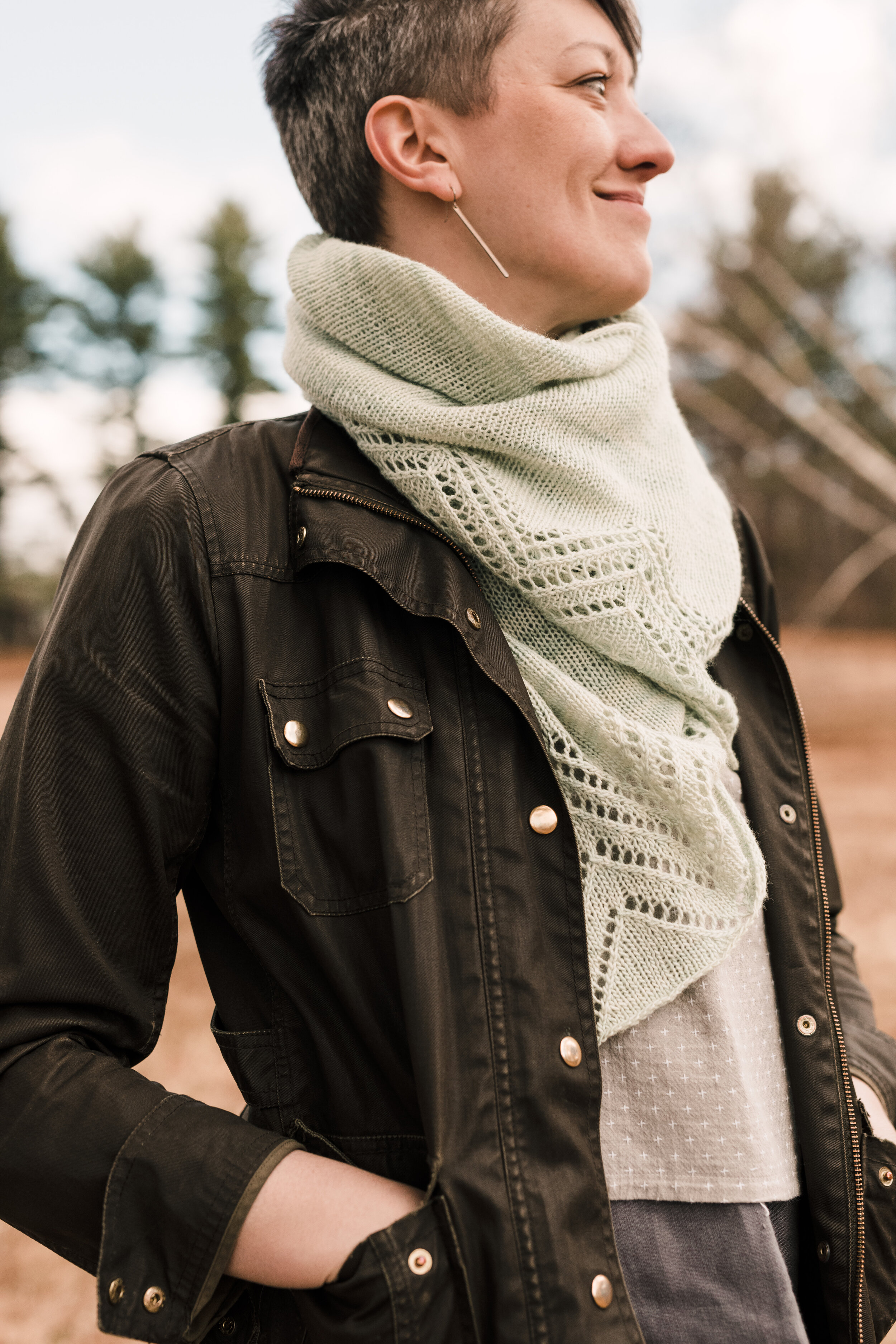Western Foothills Wrap
I’m so happy to share my latest pattern with you! The Western Foothills Wrap is a light and breezy accessory, perfect for wearing (or knitting) as the temperature rises. It uses one of my all-time favorite yarns from Manos del Uruguay called Fino, a lovely blend of merino wool and silk. I cannot praise this yarn enough! I love the way the yarn feels in my hand as I work and the finished fabric is just divine! If you haven’t worked with the yarn before, I highly recommend it.
If you’d like to make your own Western Foothills Wrap, I’ve put together some helpful hints below.
Kits for this project will be available soon!
Materials:
2 skeins Manos del Uruguay Fino (70% merino wool, 30% silk; 490 yards) in color Crystal Goblet. Or 980 yards of fingering weight yarn with lots of drape.
Gauge:
Working gauge: 23 stitches = 4” in stockinette stitch.
Blocked gauge: 17 stitches = 4” in stockinette stitch.
Needles:
US #4 (3.5mm) 40-48” circular needle or size needed to obtain gauge. I’m an incredibly loose knitter, so I would recommend most knitters try a gauge swatch using a US #5 or #6 first.
Other supplies: stitch markers, tapestry needle.
Pattern Notes:
Gauge & Blocking
You may notice there are two gauges listed for this pattern. One is a working gauge and one is the gauge after blocking. It’s very important to block lace knitting, so you can see the pattern you worked so diligently to create. The yarn I used has quite a bit of silk in it, which tends to grow more than other fibers after blocking. You want to be prepared for any growth after blocking by making an accurate gauge swatch beforehand. Don’t worry if you can’t match my working gauge, but do try to match the blocked gauge! I would suggest that most knitters make a gauge swatch on a size US # 5 to start, block it, measure it and go from there. You might have to knit and block a few swatches to find the right needle, but it’s worth it!
Casting on
This pattern is knit lengthwise, which means you will be casting on a large number of stitches. I like to put a stitch marker every 20 stitches to make counting easier. If you are worried about running out of yarn for your cast on, try using a second ball of yarn for your long tail, so you wont run out. Once all your stitches have been cast on, simply cut away the extra ball of yarn, leaving a 4” strand to weave in later.
Lace Practice
I recommend giving this lace pattern a practice before committing to the full amount of stitches. Cast on 47 stitches and work rows 1-50 of the lace pattern in practice yarn. This way, you can sort out your yarn overs and k2togs without having to rip out super long rows or cast on multiple times. Trust me, it’s worth it!
Sizing & Adjustments
I’m a pretty tall person, so this length shall might not work for you. Add or subtract stitches from the original cast on number in multiples of 20 to adjust the length.
For a medium length shawl that is about 72” long, cast on 307 stitches (40 stitches less than the original pattern.)
For a short shawl that is about 62” long, cast on 267 stitches (80 stitches less than the original pattern.)
This pattern also looks great as a scarf using only one skein of yarn instead of two!





